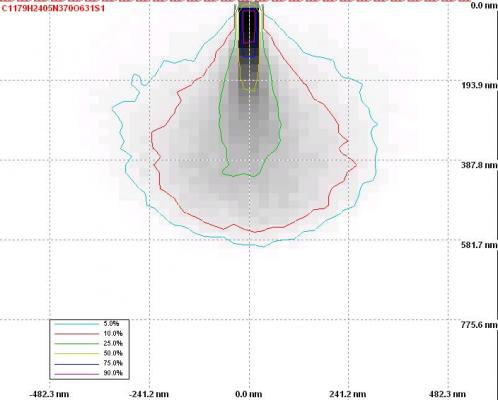CASINO
CASINO is developed at Université de Sherbrooke. The acronym has been derived from the word " monte CArlo SImulation of electroN trajectory in sOlids ". One of the physical properties is that it generates how energy is deposited onto materials. Two elements of CASINO made it only a good approximation: 1) it does not simulate cylindrical shape of materials. 2) It gives a material's density when it is only given a formula. For the first element, we use another program PENELOPE to make it closer to reality. For the second element, we use the density which was calculated from Bonino's paper.
The three pictures below were generated by CASINO, which will help us estimate how much energy is actually deposited on the spider silk from the SEM. There are a few items to clarify here:
- This software only detects energy which is above 50 eV. Particles have less energy than 50 eV will be considered deposited at their local areas.
- The dotted lines on the 10 and 15 keV graph indicate the boundaries between the spider silk and the aluminum slab. The reason which no dotted line on the 5 keV graph is because all the energy is deposited onto the spider silk before it reaches the aluminum surface.
- On the top right of each picture is the empirical formula of our spider silk sample. Janet Leathers from the chemistry department used other references to obtain this formula. However, we understand that this formula does not represent the actual chemical formula of our sample but at this point it is the closest approximation.
For more spider silk information, please visit Dr. Pogo's web site.

15 keV (22 % deposition)